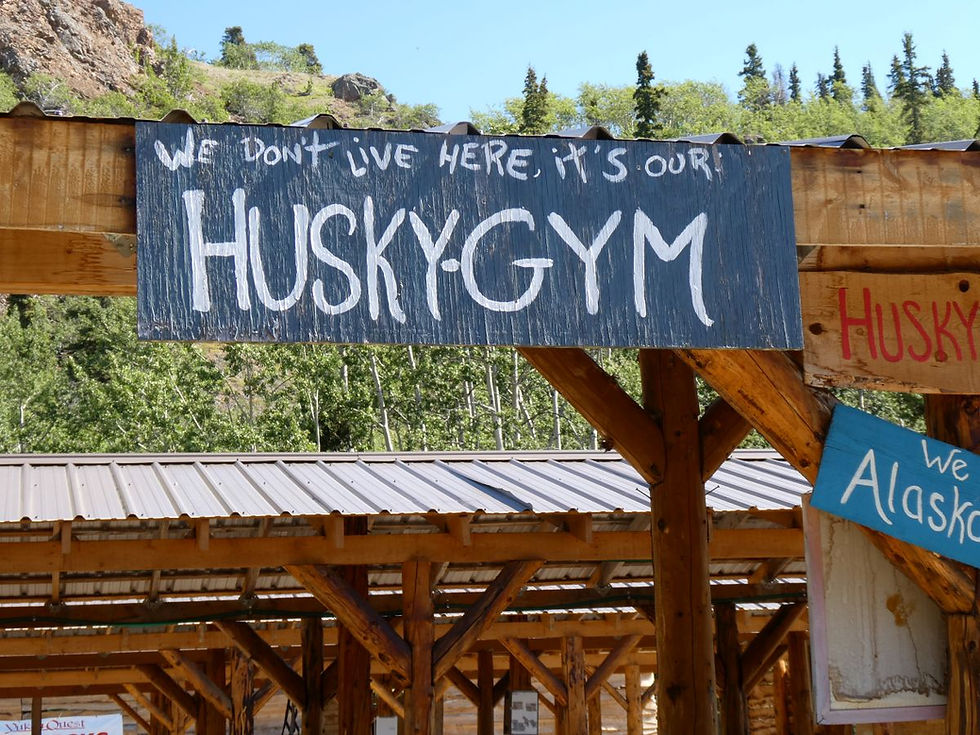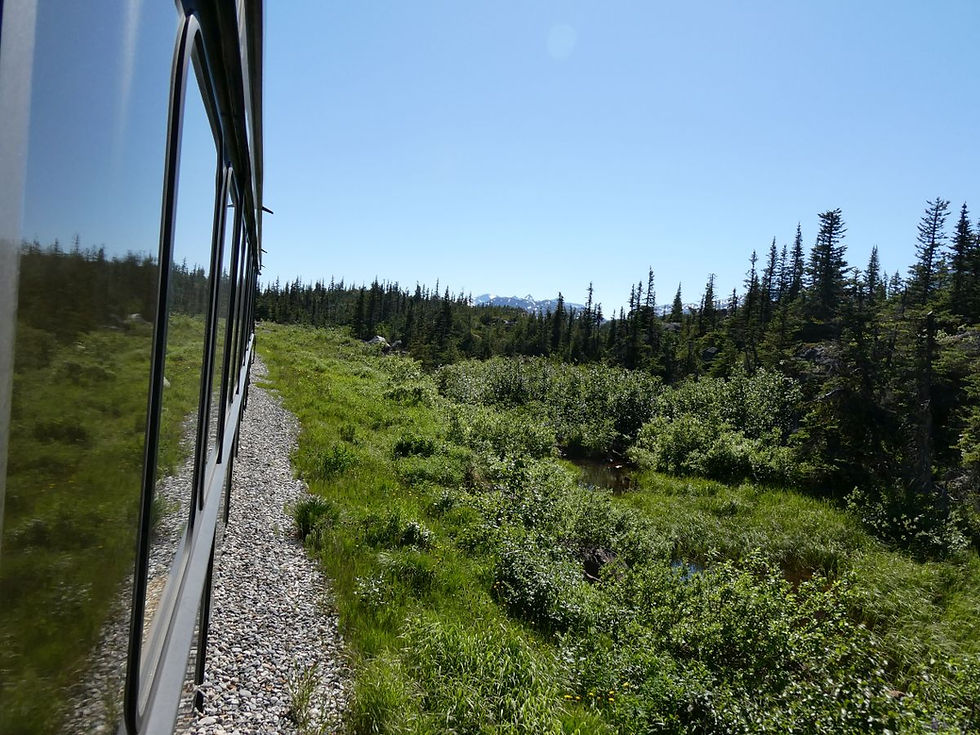
ALASKA
Skagway
July 2023
HAPPY BIRTHDAY TO ME!!!!!!!!!!
On the way to Skagway (about 30 nautical miles before the port), we passed the Eldred Rock Lighthouse. It is an early 20th-century lighthouse sited on a rocky outpost in the Lynn Canal. Built in 1905, Eldred Rock Lighthouse is the oldest original lighthouse in Alaska and the only remaining octagonal frame lighthouse of those built between 1902-1905. It was established because of the many shipwrecks nearby especially during the 1898 Gold Rush, when Lynn Canal was in heavy use. It contains a fourth order Fresnel lens.
Skagway is the northernmost point of the Inside Passage. It is located at the top of the longest and deepest fjord in North America. Location 59°27'N 135°19'W. At the height of the Klondike Gold Rush, the port town of Skagway served as the primary gateway to the legendary gold fields in the Yukon and quickly grew into Alaska’s largest settlement. Back then, it was a raucous frontier hub packed with trading posts, saloons, and guesthouses.
As the gold rush faded in the 1900s, so did Skagway, but now it has been reinvigorated as a gateway for a new kind of visitor: those looking to explore Alaska’s colorful history, pristine wildlife, and unrivaled natural beauty. The three other cruise ships in port with us were Discovery Princess, Brilliance of the Seas, and Disney Wonder. Two of them will be leaving port soon after I return from my excursion. So the town shouldn't be crowded when I am exploring this afternoon.
Skagway was incorporated in 1900 and consists of 9.49 square miles including 0.05 square miles of water. The population is 1240. Yeah, it's really small. The local Tlingit Natives call it "Shghagwei," which means rugged or windplace. This is definitely an appropriate name for the place. The town sits in a steep, narrow valley (less than a half mile wide), and the rugged mountains embrace both sides of the town. And it is seriously windy. The climate in Skagway is significantly drier than the rest of southeast Alaska because it is in the rain shadow of the coastal mountains. It gets around 31 inches of rain and 45 inches of snow per year.
Known as the "Garden City of Alaska," Skagway is filled with beauty and nature. Much of the town has been preserved as part of the Klondike Gold Rush National Historical Park. The National Park Service rangers offer free walking tours around the historic district. Skagway was a featured location in Jack London's novel "The Call of the Wild".
Since there are 3 separate cruise ship docks in Skagway, there are color-coded shapes painted on the walkways leading passengers from each dock to the downtown area (and back). Our ship was docked at the Broadway Dock (which is the most central dock) and had orange circles painted on the walkways. Other cruise docks had purple squares and red circle. The dock for the Alaska Marine Highway Terminal (which supports ferry operations) had teal triangles marking its path.
The excursion I took today was amazing.
We boarded a tour bus and headed up the Klondike Highway on a 65 mile journey into the Yukon Territory. Our tour bus driver was a teacher in Skagway. She drives the bus in the summer and told us about some of the challenges of living in Skagway in the winter and some of the cool things that the town does to gather together in the cold and dark winter months. We traveled through White Pass, which is a mountain pass on the US-Canada border -- 3,292 feet above sea level. Along the highway, we had views of majestic peaks, waterfalls, and glaciers from the bus. Leaving White Pass, we entered Canada (British Columbia) on the way to the unspoiled and untamed beauty of the Yukon Territory. (Yes, you need a passport for this excursion.) (And yes, British Columbia and the Yukon Territory are in different time zones than Alaska. Sheesh! I have no idea what time it is! Pro tip: keep your phone on the ship's time!)
The driver narrated as we drove up the Klondike Highway. She also treated us to tales of the Klondike Gold Rush throughout the journey. We passed a chain of lakes that form the headwaters of the Yukon River en route to the rustic town of Caribou Crossing (Carcross). We made several short stops along the way to take pictures of some truly gorgeous scenery including seeing the San Andreas Fault. At the Canadian border, a border control agent came on board the bus and checked all of our passports. (We would repeat this check with the US border control agents when we return to Skagway on the train.)
We arrived at Wild Adventure Yukon (formerly called Caribou Crossing Trading Post) and had a delicious chicken barbecue lunch complete with homemade donuts.
The site has a Wildlife Museum and the Royal Canadian Mounted Police Heritage Center. This interpretive display focuses on the history of Canada's Mounties and highlights their role in the Yukon Territory during the Klondike Gold Rush.
There's also a petting zoo with goats, alpacas, and donkeys.
And then there's the dog musher's village where we got to see Iditarod dogs and husky puppies (PUPPIES!!!!!!!!).
And there's a gold mining exhibit and I got to pan for gold AND keep the gold we found!
After our visit at Wild Adventure Yukon, we drove back down the Klondike Highway and had a brief tour of the Town of Carcross and a stop at the lovely artisan shops. There's also a small beach on a lake that several locals were enjoying. (It was very warm day today.) Then we headed down the highway to Fraser, British Columbia. In Fraser, we boarded the White Pass & Yukon Route Railroad for an unforgettable ride down this historic and breathtaking narrow-gauge track. The train follows a completely different route than the Klondike Highway, so we will be seeing different scenery from the other side of the river.
The White Pass & Yukon Route Railroad itself is unlike any other railroad. The iron trail was carved through some of the most rugged terrain in 1898. It was considered to be an impossible feat. Built during the Klondike Gold Rush, the railroad is an International Historic Civil Engineering Landmark -- an honor shared with the Eiffel Tower, the Panama Canal, and the Statue of Liberty. The railway was completed in 26 months by blasting through the mountains with 450 tons of explosives. The 110-mile railroad was officially completed when a final golden spike was hammered into place on July 29, 1900 in Carcross, Yukon. The railroad is now used exclusively for tourist excursions and is celebrating 125 years of operation this year.
The railroad climbs (or descends) almost 3000 feet in just 20 miles between White Pass and Skagway and features steep grades of up to 3.9%, cliff-hanging turns of 16 degrees, two tunnels, and numerous bridges and trestles. The steel cantilever bridge was the tallest of its kind in the world when it was constructed in 1901.
This train fleet is composed of a combination of 70 fully restored and replica parlor cars pulled by both steam and diesel-electric locomotives. Each of the cars is named after a lake or river in the Yukon — the oldest car, Lake Emerald, dates to 1883.
The train route passes attractions like Bridal Veil Falls (a waterfall flowing from Lake Serene to South Fork Skykomish River), Inspiration Point Mine, Dead Horse Gulch. (3000+ horses died on the trail during the Klondike Gold Rush, and their bones can still be seen near the summit.) :( The train has platforms between rail cars, so we were able go outside and get better views of the scenery and take pictures. For safety reasons, you cannot, however, go to another train car. From the train, we were able to see the original trail of 1898 which is the super narrow, super rocky trail along the river. It's amazing that the gold rush explorers carried thousands of pounds of gear on their backs on this trail.
The train ride was so cool. What an amazing way to experience this fantastic scenery.
Back in Skagway, I walked around the historic town. The Visitor Information Bureau is located in a very cool building called the Arctic Brotherhood Hall. Built in 1899, the façade is covered by nearly 9000 pieces of driftwood sticks gathered by lodge members from the shores of Skagway Bay. Between the windows you can see the letters A and B, for Arctic Brotherhood. Near the roofline, you’ll notice a makeshift gold pan and nuggets, the group’s symbol.
Near the Arctic Brotherhood Hall is the infamous Red Onion Saloon. Built in 1897 during the height of the Gold Rush, the Red Onion Saloon operated as one of the finest bordellos in town. It was an original woman-owned business. ;)
Much of Skagway is now National Park Service property. Klondike Gold Rush National Historical Park was established in 1976 to preserve and interpret the history of the Klondike Gold Rush of 1897-98. This part of the park is a six-block historic business district in downtown.
The Golden North Hotel is a distinctive landmark on Broadway in Skagway. It is a fantastic representative of the gold rush heritage of the town. The building has an onion-domed tower (an influence of Russian architecture) and was built in early 1898. The building originally housed the Klondike Trading Company, a business which started in a tent in Skagway in 1897. In 1908, it became a hotel.
The Skagway City Hall and Museum is located in the former McCabe College building. McCabe College was originally built as a school for women in 1899 by the Methodist church. The building was constructed from local granite. It was only open for one semester before it closed. The women found a "better" way to make money in the saloons in town as "Ladies of Negotiable Affection". ;) The building was sold to the federal government for the US Courthouse and served as courthouse and jail until 1956, when it was purchased by the City of Skagway.
I visited a locally owned quilt shop to get some unique Alaska treasures for Lil Mommy!!!
On the way back to the ship, I walked over to the western edge of the small town and viewed the Skagway River from the Skagway Footbridge. It's right at the end of the airport runway.
Right at the base of the cruise docks, there is a bronze sculpture which honors the hardy Tlingit packers made famous during the Klondike Gold Rush.
Alongside the cruise dock is an impressive wall of solid granite that is home to one of the most unique art collections in Alaska. Since 1928, the crews of ships have been "autographing" this wall to commemorate their first voyage to Skagway. There's a painting of a skull, known as "Soapy Smith's Skull", which is believed to have been painted in the Fall of 1926 on a natural rock formation shaped like a skull. Due to a large rockslide in 2019, access to this part of the dock is restricted. Several ships had to change their itineraries and skip this port due to the lack of access to the piers on this side.
Tomorrow, we will be cruising all day in the magnificent Glacier Bay National Park. We will be covering 113 nautical miles to get to the entrance of Glacier Bay.
Entering Skagway






























Bus Trip to the Yukon


































Wild Adventure Yukon


















































White Pass & Yukon Train


















































Historic Skagway

















































